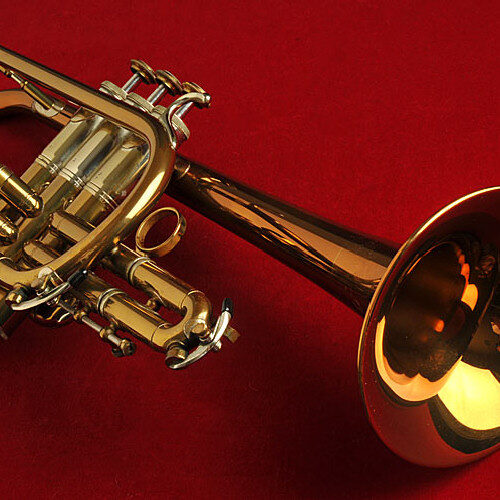
According to the trademark application filed with the U.S. Patent Office, the name “Contempora” and original stylized script were first used on May 5, 1949 and designated for “cornets, trumpets, trombones, altos, baritones, basses, French horns, clarinets, oboes, piccolos, flutes, bassoons [and] euphoniums.”
Reynolds Contempora cornets featured a larger bore size, bronze alloy bell and distinctive first-valve slide "trigger" tuning mechanism compared to the original F.A. Reynolds models. Contempora cornets inherited the "underslung" leadpipe arrangement from the earlier Reynolds models (and from the King "Master Model" cornet before that). Many believe that the Contempora was among the most outstanding cornets available in the 1950's and that the large-bore model compares favorably even with the best cornets on the market today.
1946-1952
F.A. Reynolds, division of Scherl & Roth (Cleveland, Ohio)
Models made in this early timeframe have two bell engravings: the distinctive Contempora script lengthwise down the bell, and a heavier block-letter "Reynolds" inscription across the bell flare.
Model 20
Reynolds "Contempora" large-bore cornet with first-valve trigger
Bore: .462"
Bell: 4-3/4" bronze bell
Length: 17½"
Materials: brass with nickel-silver trim
Finish: clear lacquer finish
Contempora Cornet, Model 20 [SN 24063, c.1951]. Photos used with permission from John Kagerer (Reverb ID: Alaska Music and Sound).
A superlative instrument. Its LARGE BORE, easy valve action gives true tone, easy play and perfect intonation. Beautifully balanced.
Feature note
Contempora, Argenta and some Professional trumpets and cornets featured a first-valve slide “trigger” that allowed the musician to selectively adjust the intonation of notes using the first valve. The spring-loaded trigger was connected to a metal rod that was attached to the inside of the tuning crook. Pressing the trigger pushes the tuning crook out; releasing the trigger pulls the tuning crook back in.
A third-valve slide “trigger” was available as well at an additional cost.
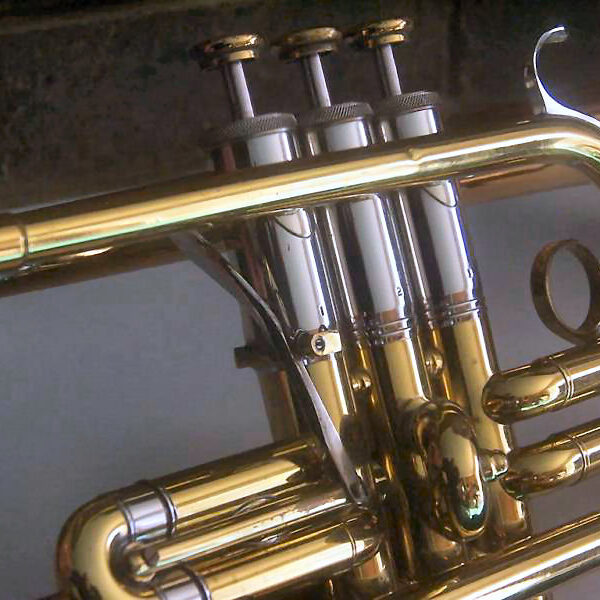

The "Kranz"
Contempora trumpets, cornets and tenor trombones introduced a new feature to the Reynolds catalog: the bell tone ring, or Kranz. Made of nickel silver, tone rings were traditionally added to instruments with thin bell flares to help dampen the vibration of the bell and keep the sound from breaking up too early at higher volumes. The best-known American band instruments with tone rings were the Olds Super line, introduced in 1932.
Whether the Contempora tone ring was added to balance a thinner bronze alloy bell or as a marketing "feature" to compete with Olds (now led by Foster Reynolds) is unknown. The fact that the tone ring does not appear on the Contempora bass trombone or other Contempora models suggests at least both options.
1952-1961
Roth-Reynolds (Cleveland, Ohio)
As F.A. Reynolds became Roth-Reynolds, the Contempora cornet was offered in numerous variations, each with a specific model number. Large or medium bores, with or without the first-valve slide trigger, and optional intonation aids expanded the product catalog dramatically over the 1950s.
By 1956, band leader Leonard Smith had become the marketing face of the Contempora trumpet and cornet line, much as James Chambers would do for the double horn and other professional artists promoted various instruments for Reynolds. Reynolds created a "Leonard Smith" model Contempora cornet (20-S) that added nickel-silver slide tubes to the Model 20-L, special engraving and a double carry case with the matched cornet model.
Contempora Cornets produce that true cornet tone, round and full, yet with the sparkling brilliance needed for solo work. Built with amazing precision, they are effortless to play. Their intonation is enthusiastically endorsed by leading artists. Famous Contempora features -- monel valves and Bronz-o-lyte bell. Also available with first valve slide 'trigger' mechanism for accurate pitch control. Complete with genuine leather Gladstone style case.
Model 20-L
Contempora large-bore cornet with first-valve trigger
Bore: .462" large bore
Bell: 4-3/4" bronze alloy with nickel-silver tone ring
Length: 17½"
Materials: brass body with nickel-silver upper valve casings (balusters) and trim; bronze-alloy mouthpiece receiver
Valves: top-loaded, inner-spring Monel valve pistons
Finish: clear lacquer finish; optional silverplate with bright bell or gold bell finish
Options: third-valve slide trigger was available for additional charge
Contempora Cornet, Model 20-L [SN 49149, c.1957]. Photos used with permission from Gary Stoner (eBay Member: prof5).
Model 20-M
Same as Model 20-L with .458" medium bore.
Note: introduced in the mid-1950s (appears in 1958 catalog, but not the 1953 Roth-Reynolds catalog)
Contempora Cornet, Model 20-M [SN 46360, c.1957]. Photos used with permission from Jack Laperriere (trumpetherald: The Royal Lancer).
Model 21-L
Contempora large-bore cornet—no first-valve trigger
Bore: .462" large bore
Bell: 4-3/4" bronze alloy with nickel-silver tone ring
Length: 17½"
Materials: brass body with nickel-silver upper valve casings (balusters) and trim; bronze-alloy mouthpiece receiver
Valves: top-loaded, inner-spring Monel valve pistons
Finish: clear lacquer finish; optional silverplate with bright bell or gold bell finish
Options: third-valve slide trigger was available for additional charge
Contempora Cornet, Model 21-L [SN 32189, c.1953]. Photos used with permission from eBay Member: larry2174.
Model 21-M
Same as Model 21-L with .458" medium bore.
Note: introduced in the mid-1950s (appears in 1958 catalog, but not the 1953 Roth-Reynolds catalog)
Contempora Cornet, Model 21-M [SN 48132, c.1957]. Photos courtesy of eBay seller: wideangleman.
Model note
A variant of Contempora Model 20-L was made in the early 1950s [SNs 32000-34000] with bronze upper valve casings (balusters), a bronze mouthpiece receiver and a bronze bell flare attached to a brass tail, similar to the nickel-silver bell flares on the Emperor models.
Contempora Cornet, Model 20-L [SN 34156, c.1954]. Photos used with permission from Jeff Stewart.
Chosen, endorsed and exclusively played by America's greatest cornetists and cornet teachers. A truly exciting instrument of great range and true cornet tone, round and full, yet with the sparkling brilliance needed for solo work. Built with amazing precision, playable with the least amount of effort. Superb intonation, Famous Contempora features - Monel valves and Bronz-o-lyte bell. Also available with first valve slide "trigger" mechanism for accurate pitch control. Complete with genuine leather, Gladstone style case.
Model 20-S
Contempora "Leonard Smith" large-bore cornet with first-valve trigger
Bore: .462" large bore
Bell: 4-3/4" bronze alloy with nickel-silver tone ring
Length: 17½"
Materials: brass body with nickel-silver upper valve casings (balusters), slides and trim
Valves: top-loaded, inner-spring Monel valve pistons
Finish: clear lacquer finish; optional triple gold plate finish
Options: third-valve slide trigger was available for additional charge
Introduced in the mid-1950s, the Reynolds Contempora "Leonard Smith" cornet featured nickel-silver valve slide tubes and an optional triple gold-plated finish compared to the standard Contempora models.
Contempora Cornet, Model 20-S [SN 44302, c.1956]. Photos used with permission from Lee DeLoach (Reverb ID: Gear Emporium).
Contempora Cornet, Model 20-S [SN 54734, c.1958]. Photos used with permission from Leroy Duncan. Shown with optional third-valve "trigger".
Model 22-L
Contempora "Diatonic" large-bore cornet with "Tune As You Play" trigger mechanism
Bore: .462" large bore
Bell: 4-3/4" bronze alloy with nickel-silver tone ring
Length: 17½"
Materials: brass body with nickel-silver upper valve casings (balusters) and trim
Valves: top-loaded, inner-spring Monel valve pistons
Finish: clear lacquer finish; optional silver-plate with bright bell or gold bell finish
Contempora Cornet, Model 22-L [1959 catalog].
"Diatonic" models
Contempora cornets with “Diatonic” compensating tuning mechanisms were available in the early 1950s, if not earlier. Unlike the standard Contempora models, which had a trigger mechanism connected to the first-valve slide, the Diatonic model (22-L) with the “Tune-As-You-Play” (TAYP) mechanism featured a trigger connected to the main tuning slide that allowed any note to be adjusted as the instrument was played.
The intent of this mechanism was to provide mechanical control of note-specific tuning traditionally done by "lipping up" or "lipping down" at the mouthpiece.
The Contempora "Diatonic” cornet was rebranded as the “Renascence” model in 1959 and went out of production sometime after Reynolds was sold to RMC (1961).
The Reynolds Renascence Trumpets and Cornets equipped with Diatonic "Tune As You Play" are instruments which can be played perfectly in tune. Their sensitivity and response give the feeling of playing through the horn rather than to the horn, and with exceptional valve action the most difficult passages become graceful and fluent.
Any serious student or teacher of trumpet or cornet who has not experienced the versatility of the Reynolds Renascence instruments has a treat in store when putting them through their paces.
1961-1964
RMC/Reynolds (Cleveland, Ohio)
Sometime after Richards Music purchased Reynolds in 1961, the product catalog was renumbered. The old numbers were replaced with a new scheme that reflected the type of instrument. To the best of knowledge, the instrument specifications did not change, just the model numbers.
Model CR-11
Contempora large-bore cornet with first-valve trigger
Bore: .462" large bore
Bell: 4¾" bronze alloy with nickel-silver tone ring
Length: 17½"
Materials: brass body with nickel-silver upper valve casings (balusters) and trim
Valves: top-loaded, inner-spring Monel valve pistons
Finish: clear lacquer finish; optional silverplate with bright bell or gold bell finish
Options: third-valve slide trigger was available for additional charge
Contempora Cornet, Model CR11 [SN 70068, c.1963].
Medium-bore variations were still available, though not listed in catalogs.
Contempora Cornet, Model 20M [SN 70083, c.1963].
Designed with a bore that meets the exacting requirements of world-reknown artists, this instrument will give every performer complete freedom of interpretation and control. Each instrument produces its traditional tonal color -- brilliance in the trumpet and mellowness in the cornet -- with exceptional projection and carrying power in all dynamic levels. Solid monel-nickel valve pistons for perfect action over a longer period of use. Bronze-alloy bell. Optional first valve trigger.
Model CR-15
Contempora large-bore cornet—no first-valve trigger
Bore: .462" large bore
Bell: 4-3/4" bronze alloy with nickel-silver tone ring
Length: 17½"
Materials: brass body with nickel-silver upper valve casings (balusters) and trim; bronze-alloy mouthpiece receiver
Valves: top-loaded, inner-spring Monel valve pistons
Finish: clear lacquer finish; optional silverplate with bright bell or gold bell finish
Options: third-valve slide trigger was available for additional charge
1964-1970
Reynolds (Fullerton, Calif.; Abilene, Texas)
After CMI purchased the assets to Reynolds, trumpets, cornets, trombones and French horns were made at the Olds factory in Fullerton, Calif. There were slight adjustments to the model specifications compared to the Cleveland instruments.
Model CR-11
Contempora large-bore cornet with first-valve trigger
Bore: .468" large bore
Bell: 4-3/4" bronze alloy with nickel-silver tone ring
Materials: brass body with nickel-silver upper valve casings (balusters), slides and trim
Valves: top-loaded, inner-spring Monel valve pistons
Finish: color-buffed brass finish with epoxy coating
Contempora Cornet, Model CR11 [SN 222311, c.1966]. Photo source: eBay.
In the class of the professional Contempora TU-11 Trumpet, with all the same features: easy-action solid monel-nickel valve pistons; nickel-silver slides, trim and tone ring; bronze alloy bell; 1st valve trigger. A marvel for freedom of interpretation and control!
Contempora's features combine to give you the finest cornet made today. This outstanding professional instrument is handcrafted and precision engineered for greater agility and tone performance. The tone ring insures a bright and incisive tone, and eliminates vibration-roughness. Lightning-fast valve action affords quick response for added versatility. Finish is highly color-buffed brass with long-lasting epoxy coating.
1970-1979
Reynolds (Fullerton, Calif.)
In 1970, Reynolds merged production lines with Olds in Fullerton and sold the Abilene plant to Conn. In most cases, a horn would come off the California production line and become either a Reynolds- or Olds-branded instrument based on detailing and finish.
Model CR-11
Contempora large-bore cornet with first-valve trigger
Bore: .468" large bore
Bell: 4-3/4" red-brass ("Lubaloy") with nickel-silver tone ring)
Materials: brass body with nickel-silver upper valve casings (balusters), slides and trim
Finish: highly color-buffed brass finish with epoxy coating
Note: based on the traditional Contempora design, the CR-11 was replaced by the CR-10 in 1974.
Contempora Cornet, Model CR11 [1970 catalog].
Completely redesigned to meet the requirements of the advanced cornet player, the new CR-10 Contempora is the finest cornet available. The unique top-loaded, inner-sprung pistons insure lightning-fast valve action while the new air column produces the pure tone quality so necessary in the cornet section or as a solo instrument. The new CR-10 lubaloy bell flare helps project the full, rich sound long associated with the Contempora.
Model CR-10
Contempora large-bore cornet with first-valve trigger
Bore: .468" large bore Bell: 5" red-brass ("Lubaloy") bell flare (no nickel-silver tone ring) Materials: brass body with nickel-silver trim Finish: color-buffed brass finish with epoxy coating
Note: the CR-10 was introduced in the 1974 catalog, replacing the long-lived CR-11 model. It appears in a 1975 price list, then is absent from Reynolds' offering.
Contempora Cornet, Model CR10 [SN 296663, c.1975]. Photo source: eBay.
The purpose of this website is to preserve the history of the F. A. Reynolds Company and the distinctive qualities of its brass instruments. Contempora Corner and contemporacorner.com are not related or associated in any way to the former or current F.A. Reynolds Company.
Copyright © 2004-2024 ElShaddai Edwards. All Rights Reserved. Terms of Use.

![Contempora Cornet, Model 20 [SN 24063, c.1951]. Photos used with permission from John Kagerer (Reverb ID: Alaska Music and Sound).](https://contemporacorner.com/wp-content/uploads/2022/06/024063_Model-20-1-1024x640.jpg)
![Model 20-L [SN 49149]. Photos used with permission from Gary Stoner (eBay Member: prof5).](https://contemporacorner.com/wp-content/uploads/2008/12/049149-583x1024.jpg)
![Model 20-M [SN 46360]. Photos used with permission from Jack Laperriere (trumpetherald: The Royal Lancer).](https://contemporacorner.com/wp-content/uploads/2008/12/046360.jpg)
![Model 21-L [SN 32189]. Photos used with permission from eBay Member: larry2174.](https://contemporacorner.com/wp-content/uploads/2008/12/032189.jpg)
![Model 21M [SN 048132]. Photos courtesy of eBay seller: wideangleman.](https://contemporacorner.com/wp-content/uploads/2008/12/048132-1024x630.jpg)

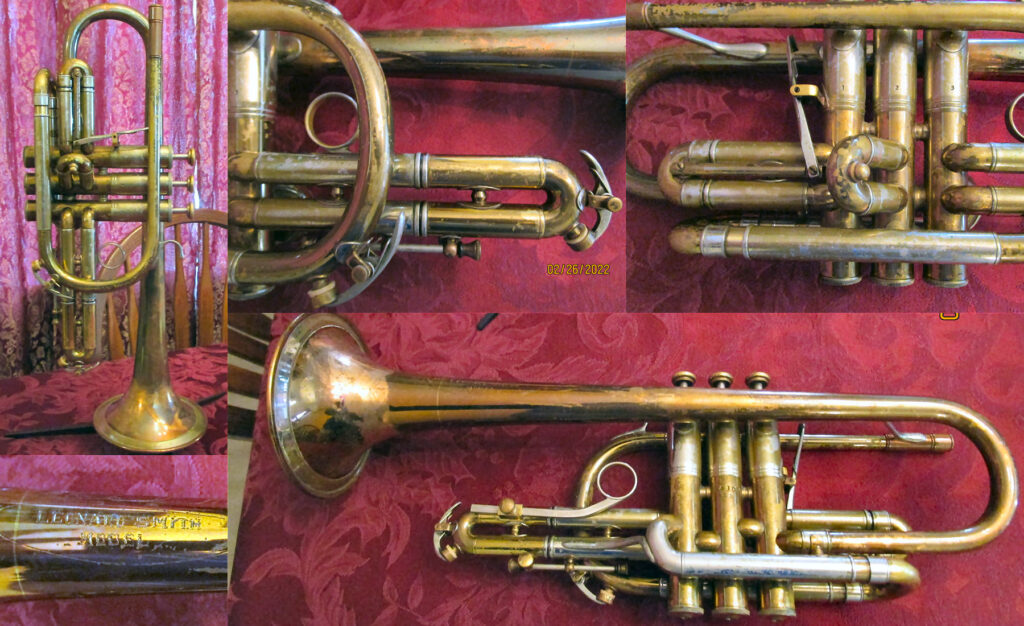
![Model 20-S [SN 54734]. Photos used with permission from Leroy Duncan. Shown with optional third-valve "trigger".](https://contemporacorner.com/wp-content/uploads/2008/12/054734.jpg)
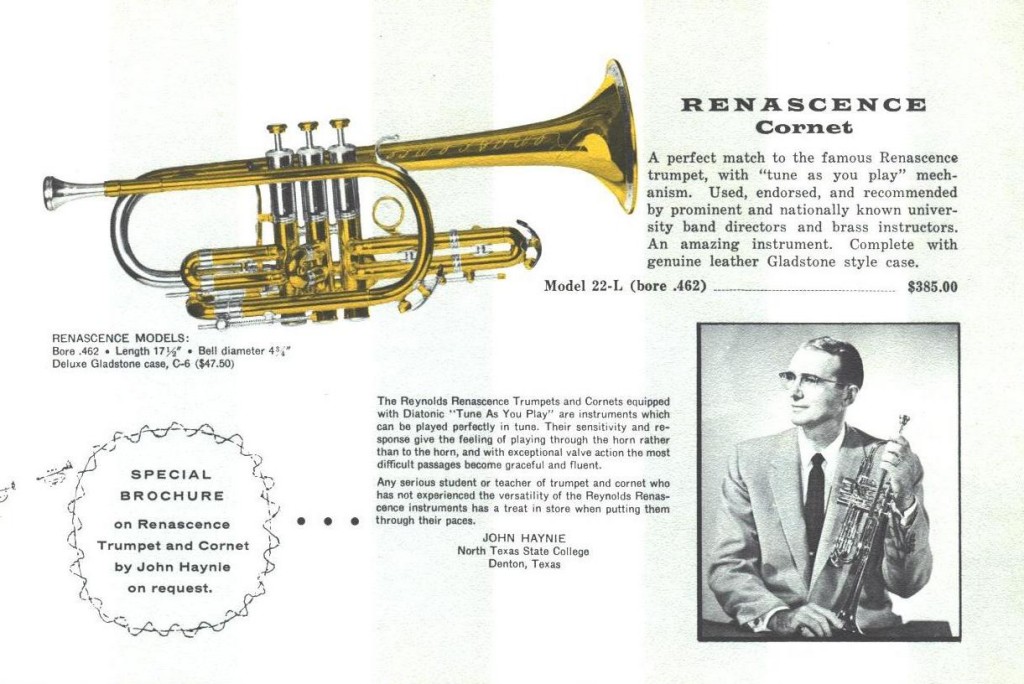
![Model CR11 [SN 70068]](https://contemporacorner.com/wp-content/uploads/2022/01/070068_CR11-1024x576.jpg)
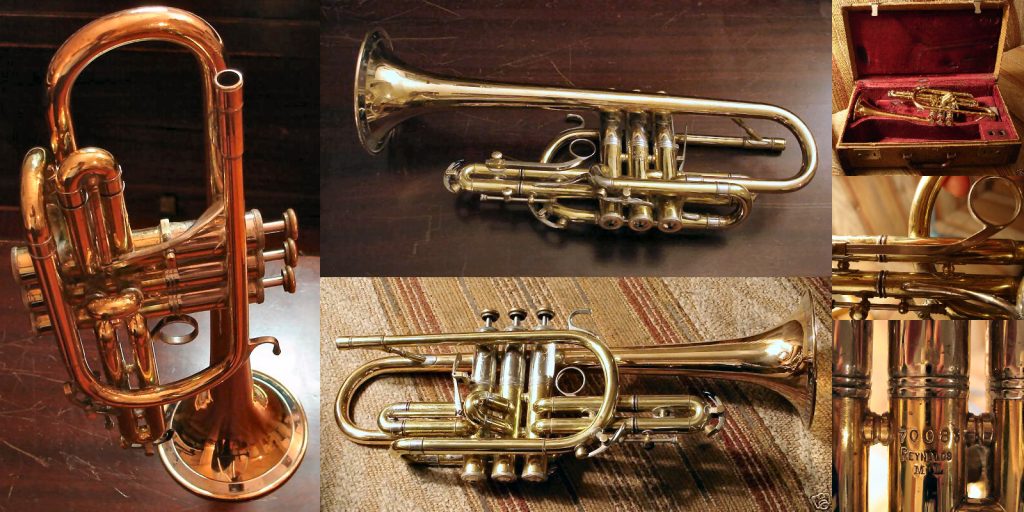
![Model CR-11 [SN 222311]. Photo source: eBay.](https://contemporacorner.com/wp-content/uploads/2008/12/222311.jpg)
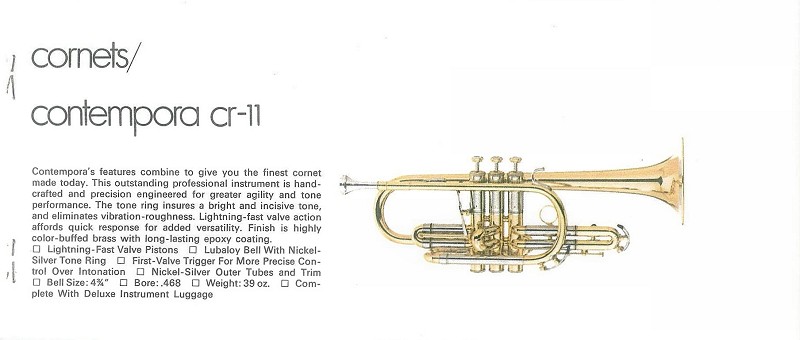
![Model CR-10 [SN 296663]. Photo source: eBay.](https://contemporacorner.com/wp-content/uploads/2008/12/296663.jpg)